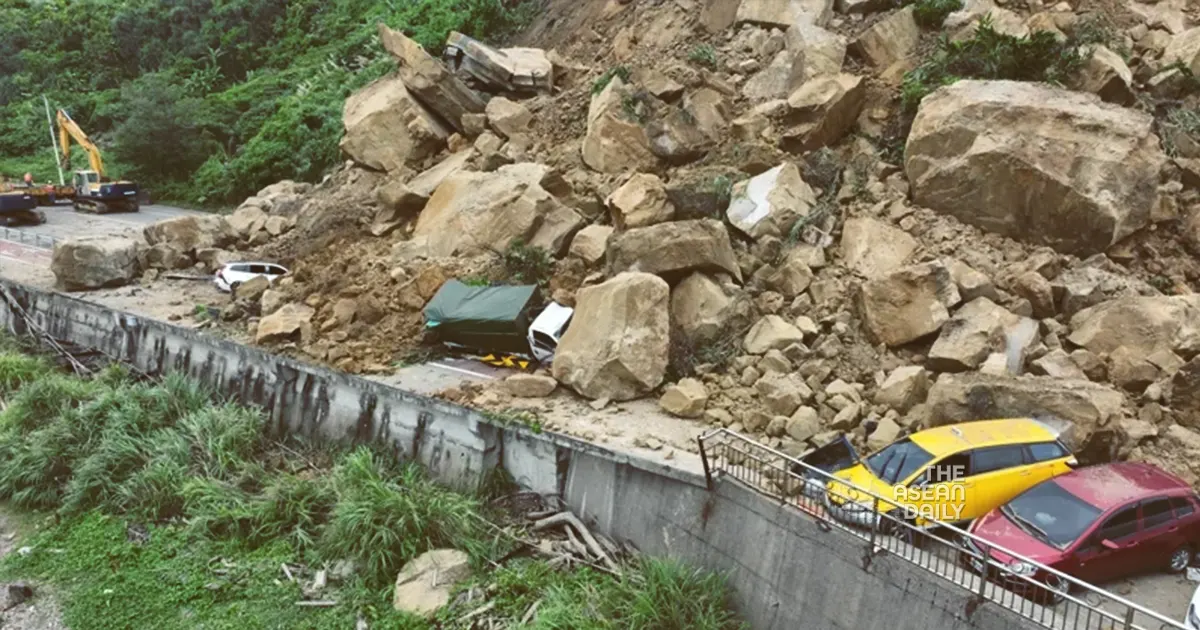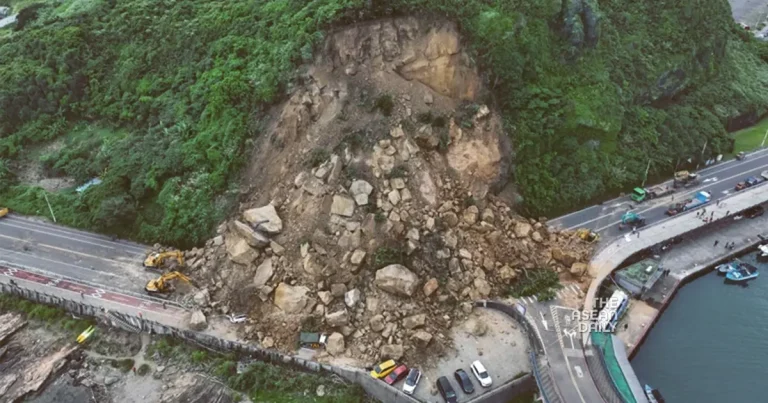4-6-2024 (TAIPEI) A massive landslide in Keelung City, Taiwan, has left multiple vehicles trapped and raised grave concerns about potential casualties. The devastating incident occurred around 2 pm on Monday (3 June) at the Chaojing Park intersection of Beining Road in the Zhongzheng District, causing widespread panic and prompting an immediate rescue operation.
According to reports from the Taiwanese Ministry of Transportation, six vehicles were buried under the debris, leaving authorities scrambling to locate and rescue any individuals who may have been trapped. The gravity of the situation was further compounded when two men were rushed to the hospital after sustaining injuries, though the extent of their wounds remains unclear.
Eyewitness accounts and harrowing video footage captured the terrifying moments as the landslide unfolded. Initially, a smaller landslide occurred in one area of the mountain, but it was merely a precursor to the catastrophic event that followed. Suddenly, a massive section of the mountain began to collapse, causing the ground to tremble violently.

Another video depicted the sheer magnitude of the landslide, with massive chunks of rock cascading onto the road, engulfing vehicles in their path. The aftermath painted a chilling scene, with a car and a truck partially buried in the rubble, while another car had been overturned and tumbled down the slope of the road.
Responding to the crisis, the Keelung City Fire Department swiftly mobilized its resources after receiving a report from the public at 2:28 pm. Two fire trucks, four ambulances, and 26 personnel were immediately dispatched to the area to initiate search and rescue operations.
While the Taiwanese Ministry of Transportation has confirmed that six vehicles were trapped under the debris, rescue workers are still working tirelessly to determine if there are any additional individuals buried beneath the wreckage.
Experts attribute the landslide to the continuous rain that had been pummeling northern Taiwan in the days leading up to the incident. Lai Shiping, vice president of the Association of Geotechnical Engineers, explained that the water had softened the soil, causing it to loosen and ultimately give way.
Lai further noted that the dense vegetation on the mountain had made it challenging to detect cracks and implement preventative measures, underscoring the unpredictable nature of such natural disasters.




